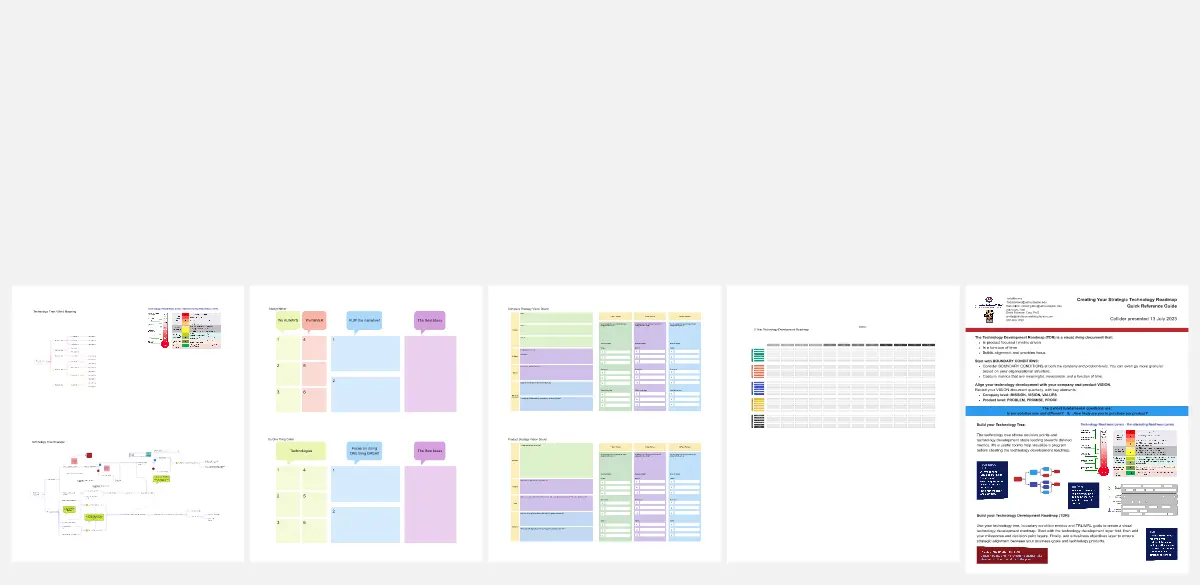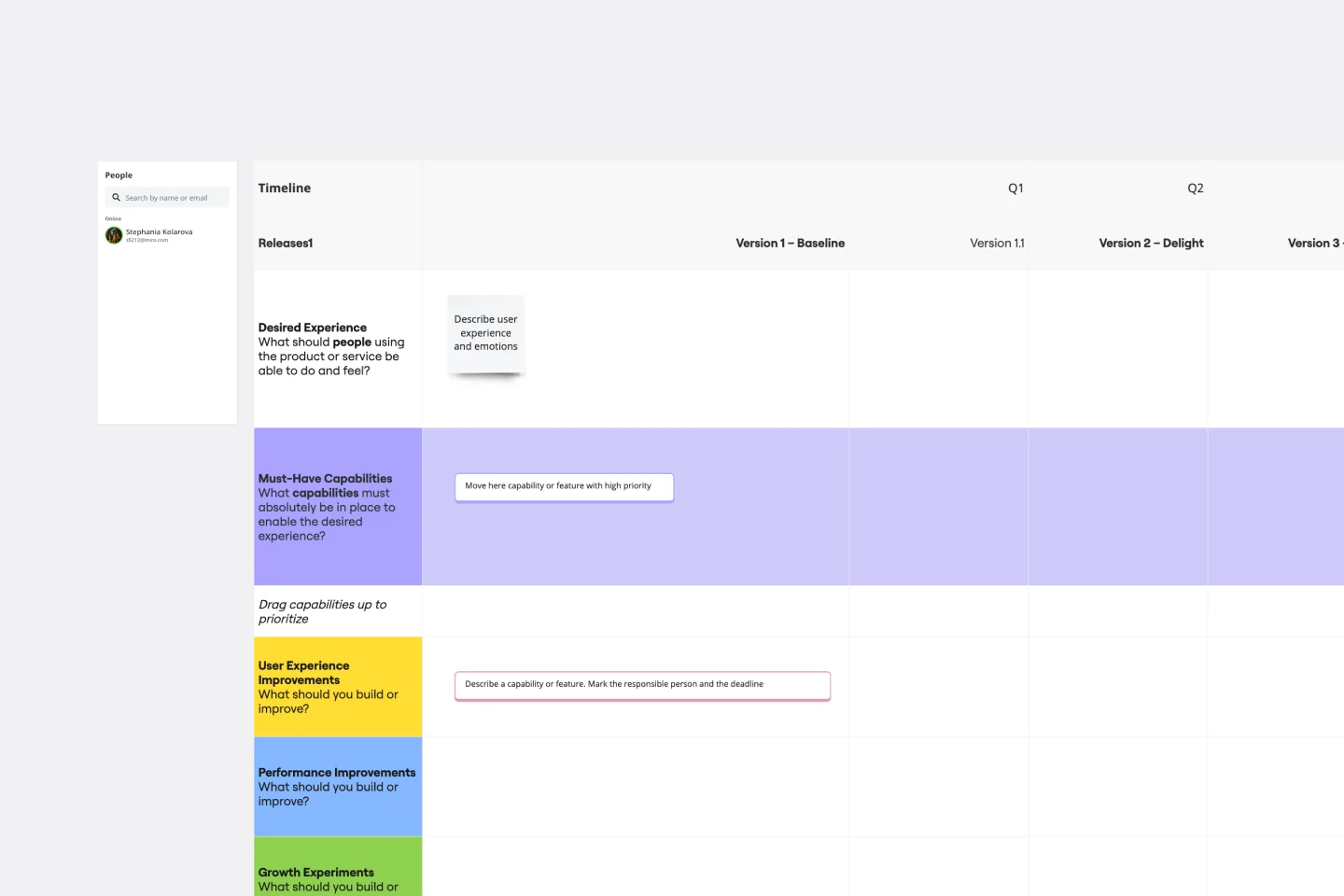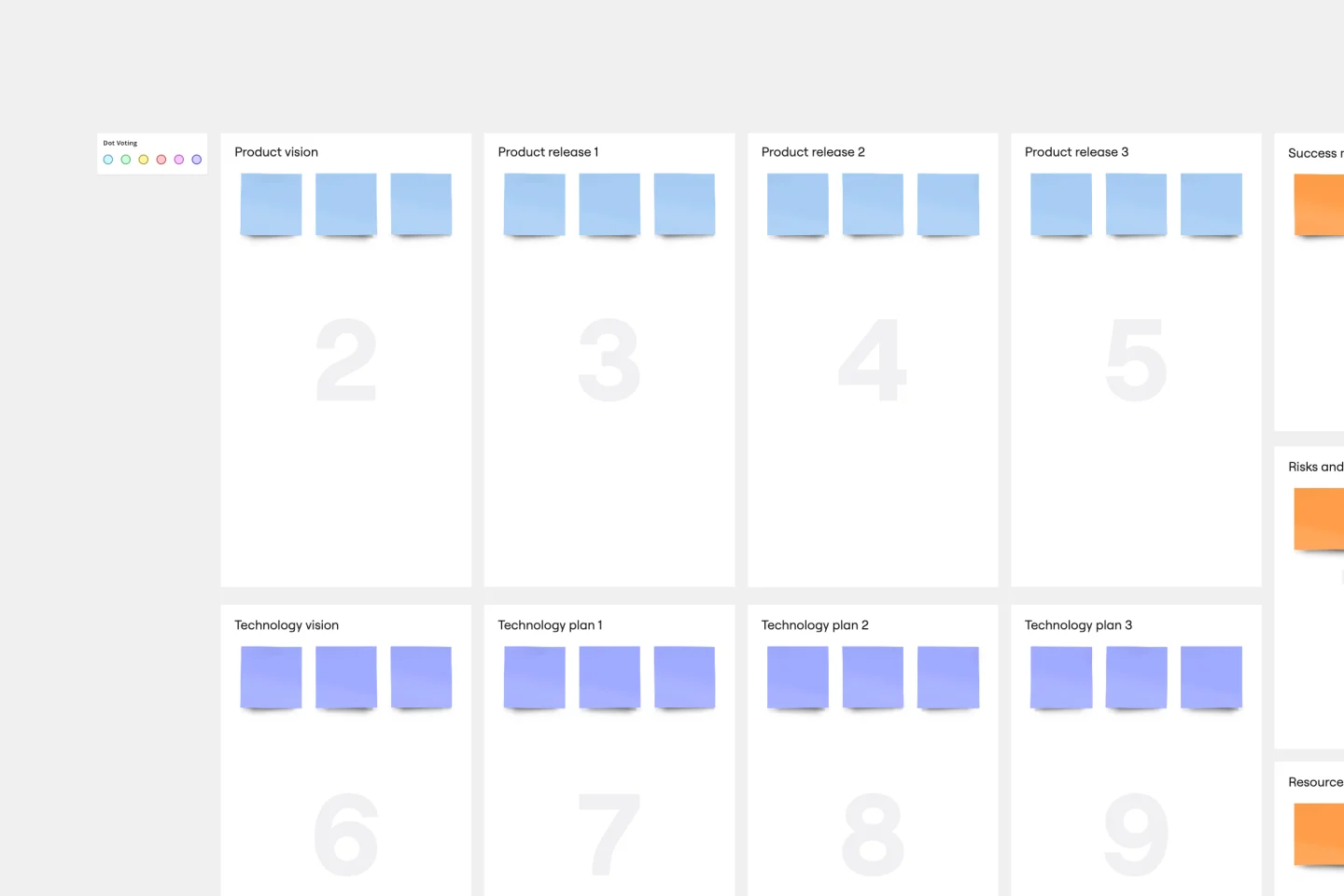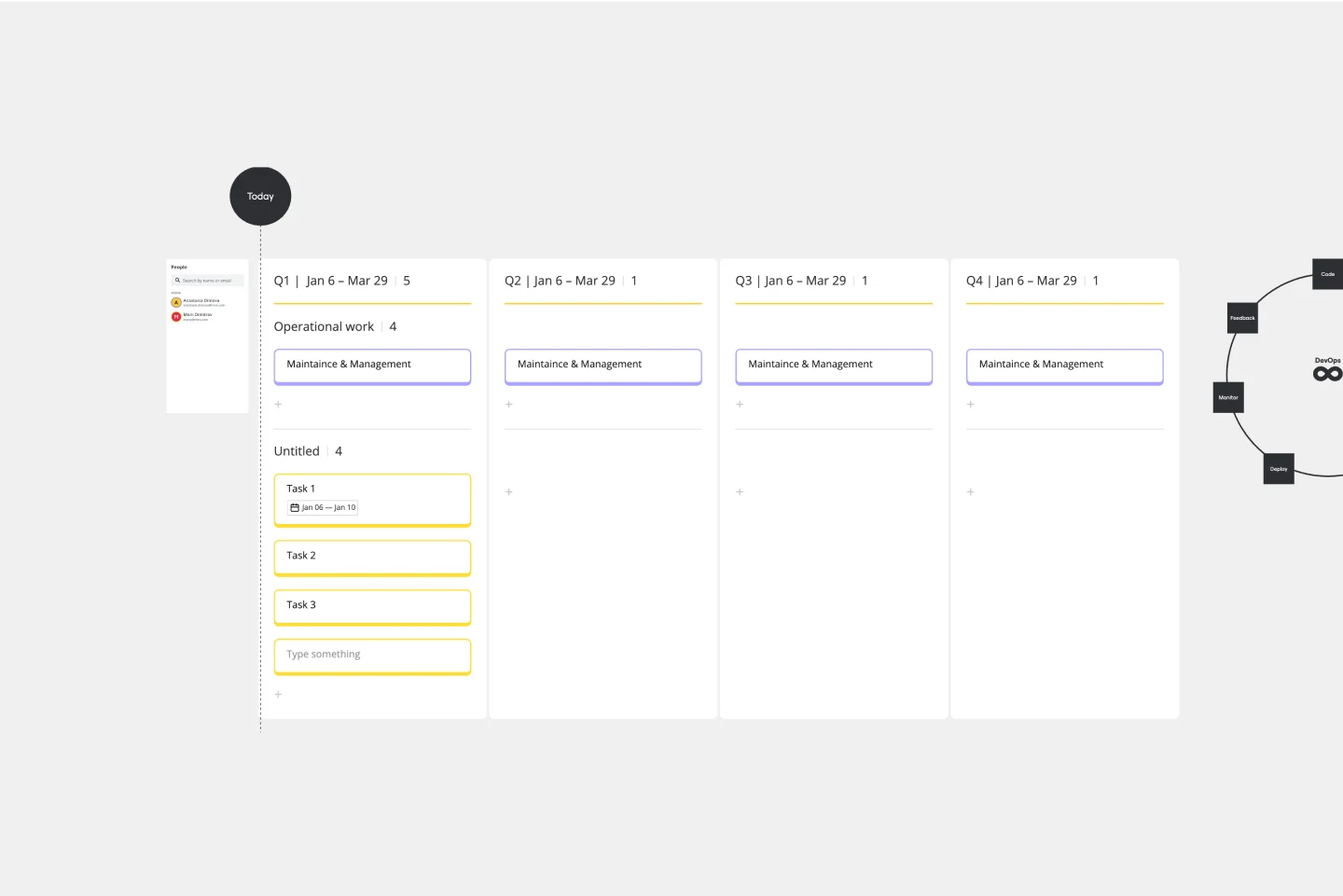Technology roadmap templates
Our technology roadmap templates help you plan and communicate your tech strategy effortlessly. Whether you're mapping future developments, aligning teams, or tracking progress, these templates provide a clear structure to visualize your roadmap and drive innovation.
6 templates
Technology Roadmap Template
8 likes361 uses
Technology Roadmap Template
A technology roadmap helps teams document the rationale of when, why, how, and what tech-related solutions can help the company move forward. Also known as IT roadmaps, technology roadmaps show teams what technology is available to them, focusing on to-be-scheduled improvements. They allow you to identify gaps or overlap between phased-out tech tools, as well as software or programs soon to be installed. From a practical point of view, the roadmap should also outline what kinds of tools are best to spend money on, and the most effective way to introduce new systems and processes.
Strategic Technology Roadmap Worksheets
56 likes255 uses
Strategic Technology Roadmap Worksheets
We all know that technology commercialization success starts with the end in mind, a product with market viability.
Product Development Roadmap Template
4 likes65 uses
Product Development Roadmap Template
Product development roadmaps cover everything your team needs to achieve when delivering a product from concept to market launch. Your product development roadmap is also a team alignment tool that offers guidance and leadership to help your team focus on balancing product innovation and meeting your customer’s needs. Investing time in creating a roadmap focused on your product development phases helps your team communicate a vision to business leaders, designers, developers, project managers, marketers, and anyone else who influences meeting team goals.
Technology Product Canvas Template
0 likes38 uses
Technology Product Canvas Template
Originally created by Prem Sundaram, the Technology Product Canvas allows product and engineering teams to achieve alignment about their shared roadmap. The canvas combines agile methodologies with UX principles to help validate product solutions. Each team states and visualizes both product and technology goals, then discusses each stage of the roadmap explicitly. This exercise ensures the teams are in sync and everyone leaves with clear expectations and direction. By going through the process of creating a Technology Product Canvas, you can start managing alignment between the teams -- in under an hour.
DevOps Roadmap Template
1 likes28 uses
DevOps Roadmap Template
DevOps teams are constantly creating code, iterating, and pushing it live. Against this backdrop of continuous development, it can be hard to stay abreast of your projects. Use this DevOps Roadmap template to get a granular view of the product development process and how it fits into your organization's product strategy. The DevOps Roadmap lays out the development and operations initiatives you have planned in the short term, including milestones and dependencies. This easy-to-use format is easily digestible for audiences such as product, development, and IT ops.

Explore more
About the Technology Roadmap Templates Collection
Technology roadmap templates help product managers and IT professionals plan and visualize the strategic direction of their technology initiatives. We offer a comprehensive collection of technology roadmap templates designed to support teams in aligning on goals, tracking progress, and ensuring that everyone is on the same page. These templates are adaptable and can be customized to fit the specific needs of any project, whether it's an IT technology roadmap template or a product technology roadmap template.
Why you'll love our technology roadmap templates
Using Miro's technology roadmap templates offers many benefits:
Clear vision and strategy: These templates help you outline your technology strategy, ensuring
that all team members understand the long-term goals and the steps needed to achieve them.
Improved collaboration: Miro's collaborative features allow multiple team members to work on the roadmap simultaneously, making it easy to gather input and make real-time updates.
Visual representation: The visual nature of the templates makes it easier to communicate complex information, helping stakeholders quickly grasp the project's status and future direction.
Flexibility and customization: Miro's templates are highly customizable, allowing you to tailor them to your specific needs and preferences.
Integration with other tools: Miro integrates seamlessly with other tools like Jira, making it easy to sync your roadmap with your project management workflows.
How to use the technology roadmap templates in Miro
Select a template: Start by choosing a technology roadmap template from Miro's template library. You can find various options, including IT technology roadmap templates and product technology roadmap templates.
Customize the template: Once you've selected a template, customize it to fit your project's needs. Add your project goals, milestones, and key deliverables. You can also adjust the layout and design to match your team's preferences.
Add details: Populate the template with detailed information about your technology initiatives. Include timelines, responsible team members, and any dependencies or risks that need to be managed.
Collaborate with your team: Invite your team members to collaborate on the roadmap. Use Miro's commenting and real-time editing features to gather feedback and make updates as needed.
Track progress: Use the roadmap to track the progress of your technology initiatives. Update the template regularly to reflect any changes in timelines or priorities.
Share with stakeholders: Share the roadmap with stakeholders to keep them informed about the project's status and future direction. Miro's sharing options make it easy to provide access to anyone who needs it.
Using Miro's technology roadmap templates lets your team stay organized, aligned, and focused on achieving your technology goals. These templates provide a clear and visual way to plan and track your initiatives, helping your team to thrive and succeed.
